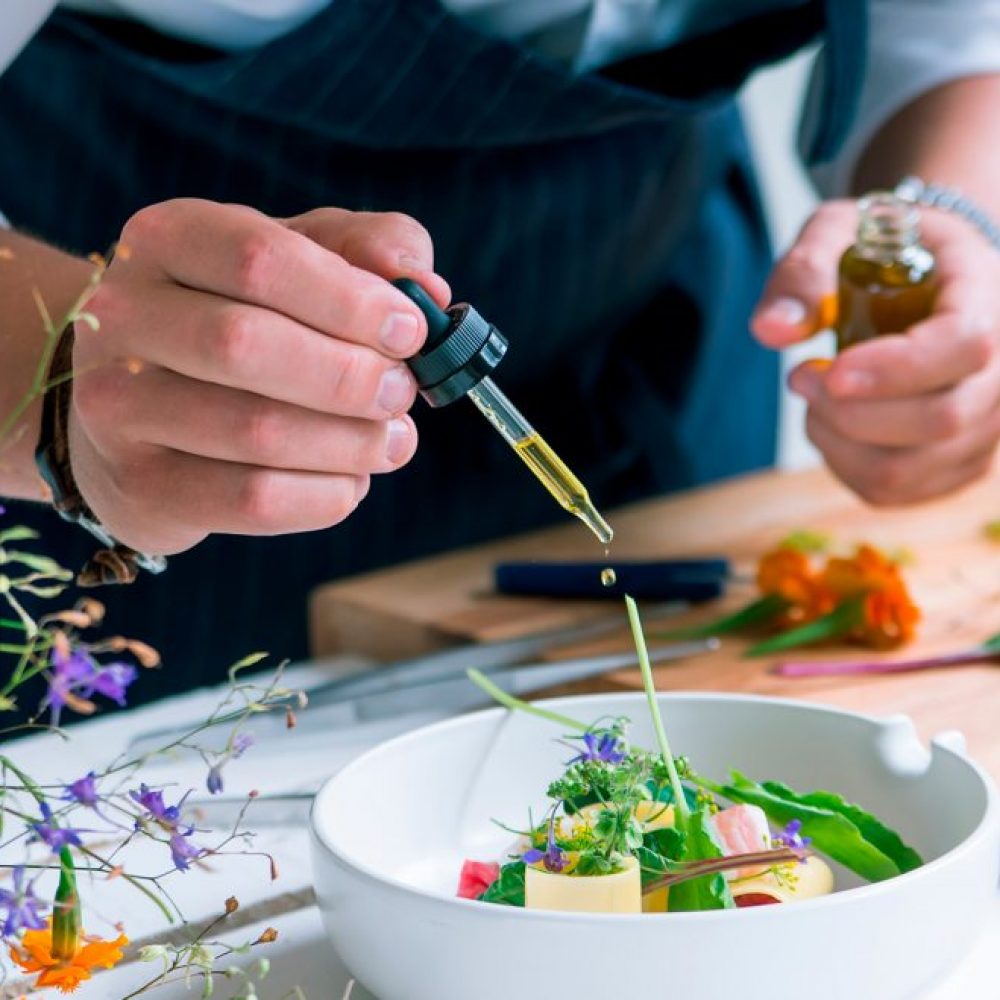When cooking, we apply different techniques with extra virgin olive oil, both raw and hot. When we use the olive oil in our recipes and preparations, the food absorbs part of the olive oil used, enhancing its flavor. Today, we share the main culinary techniques with olive oil so that you can learn them and put them into practice in your day to day in the kitchen.
As chef Firo Vázquez, says in the GastrOleum app, everything starts with oiling, a technique that consists in adding raw olive oil to an ingredient, in order to enhance its flavor, color or aromas.
Along with oiling, we list 20 raw olive oil techniques for cooking:
1. Dressing:
Technique consisting of the mixture of spices and other condiments, extra virgin olive oil and acid (such as vinegar or citrus), to enhance or improve the flavor of a product.
2. Aromatizing:
Give aroma to olive oil by adding aromatic herbs, seeds, spices or condiments.
3. Stirring:
Stir olive oil energetically to modify its consistency, appearance or color.
4. Coloring:
Change the olive oil color by adding a natural or artificial substance or lipophilic additive.
5. Freezing:
Solidify olive oil by cold action in order to modify its texture or to preserve a perishable good.
6. Preserving:
Soak food in olive oil to prolong its shelf life for consumption, such as cheeses, cooked or fresh beef tenderloins, sausages, etc.
7. Drawing:
Draw on a surface (plate, tray) a figure using oil that may or may not be colored.
8. Emulsifying:
Mix two ingredients, initially incompatible to create a homogenous, bulky mixture with a different texture than the original texture of both ingredients separately.
9. Sweetening:
Add sugar to extra virgin olive oil.
10. Lining:
Add a dash or line of raw olive oil to a dish or preparation.
11. Soaking:
Soak raw or previously cooked food in olive oil.
12. Polishing:
Brighten and add extra virgin olive oil to certain preparations to enhance its colors and aspect.
13. Macerating:
Soak raw, dried or confit food in oil so that it is impregnated with its perfume and aromas.
14. Marinating:
Preserve certain raw foods in olive oil so that they soften and absorb aromas or flavors. You can also add vinegar, wine, spices, etc.
15. Topping:
Top a dish with olive oil evenly or add it to a sauce.
16. Airing:
Expose olive oil to the air, which accelerates its oxidation and loss of aromas.
17. Closing:
Close or put a stopper to the olive oil bottle in order to avoid the loss of aromas, decrease its oxidation speed and avoid the absorption of strange odors.
18. Staining:
Stain an olive oil with soot, coal or ash.
19. Drenching:
Drench food with olive oil.
20. Shaking:
Shake oil quickly and vigorously from one side to another.
Surely, many of these techniques are used in your kitchen on a day-to-day basis. Now you can put into practice some techniques you did not know and surprise your family with delicious meals.
